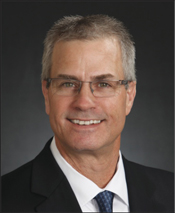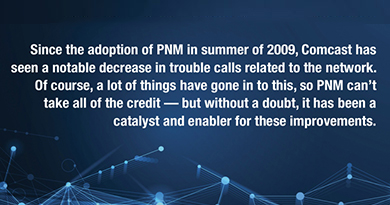The Business Perspective of Proactive Network Maintenance
By Ed Marchetti
I was surprised when reminded that PNM has been “a thing” for almost 10 years. It seems almost like yesterday when we were seeing this for the first time and wondering about the future of cable maintenance. In the early days, there was a lot of excitement and buzz about new technology coming to the field. The promise was that we could now see the precise location and severity of every impedance mismatch on our cable system. Imagine having a mesh of echo sensors at every end-of-line in your cable network, providing real-time fault mapping, including distance. Knowing how much time, money and energy we have spent finding these problems in the past, it’s easy to get excited about automating this part of the job. The first thing that came to mind was that we could spend a lot less time finding problems and more time fixing them. The next thing we considered was how to operationalize something that seemed so complex and borderline scary, given the disruptive potential.
It wasn’t difficult to find a handful of champions in the field willing to embrace new technology. Within a few weeks of our first field trials, the reports were rolling in and everyone was talking about how this was a game changer for cable operations. It took a couple of years to figure out but we were eventually able to scale this out across our national operations and believe me, it wasn’t always easy. One of the most unexpected problems we encountered was a spike in span replacement costs, but as they say, that’s not a bad problem to have. It wasn’t a hard decision to make these critical investments in one of our most important assets. These investments are still paying dividends today.
Using different cost models for traditional maintenance, we can easily imagine a radical improvement. One example is sweeping and balancing nodes, which typically takes around 2.5 hours per route-mile of cable plant. Using computerized network topology (geographic information system or GIS) and PNM full band capture (FBC), we can automatically quantify the number of impairments per route mile for any given cable system. Calculating the gain in operational efficiency yields a very credible approximation. To be clear, this calculation represents an improvement in productivity. For example, if a given system has 10,000 route miles and 700 spectral impairments are detected within 500 route miles, the unnecessary driving around can be removed from the equation as inefficiency. In this example, assuming 2.5 hours per route mile, we can improve efficiency from 25,000 total sweep hours down to something like 1,250 hours. This represents a stunning 95% increase in operational efficiency.
Since the adoption of PNM in summer of 2009, Comcast has seen a notable decrease in trouble calls related to the network. Of course, a lot of things have gone in to this, so PNM can’t take all of the credit — but without a doubt, it has been a catalyst and enabler for these improvements.
Over the last 10 years, there’s been no shortage of trials and tribulations in this space, but when I look back, it’s difficult to imagine reverting to the stone age. The days of blindly implementing a preventive maintenance schedule and relying on manual measurements are, thankfully, behind us. The big winners here are network reliability, operational efficiency and happier customers.
 Ed Marchetti
Ed Marchetti
Senior Vice President, Technical Operations
Comcast Cable
Ed Marchetti oversees technical operations, workforce operations, network operations, technology and tools, communications, data/analytics and the customer/tech experience. With more than 30 years of telecommunications and information industry experience, Ed offers fresh perspective and strategic direction for operational excellence and inspires excellence, goals attainment and operational success. Ed is a graduate of Comcast’s Executive Leadership Forum and has completed the SCTE•ISBE Leadership Institute at Tuck Executive Education at Dartmouth. Ed also serves on the SCTE•ISBE Board of Directors.




